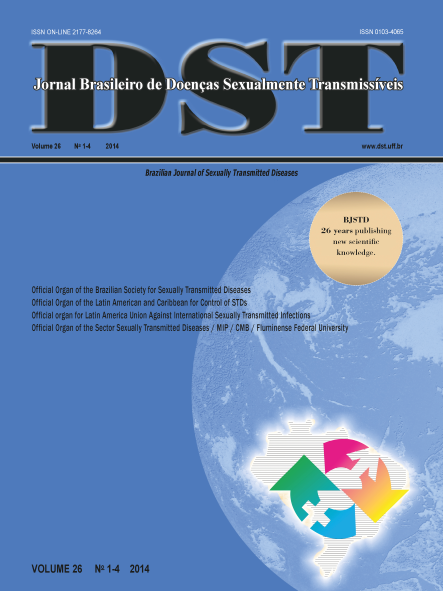Human papillomavirus infection in healthy men from Rio de Janeiro, Brazil
Keywords:
HPV, STD, men, asymptomatic, PCRAbstract
Introduction: Genital infections by human papillomavirus (HPV) are the most prevalent sexually transmitted viral diseases worldwide. Although the natural history of cervical cancer is better understood, there are still scarce information regarding the etiology of penile cancer, and the natural history of HPV infection in men is not yet fully elucidated. Objective: This study aimed to determine the prevalence of HPV infection in penile samples, from a clinically asymptomatic male population. Methods: A total of 550 samples were collected between January 2011 and July 2014 in different institutions in the State of Rio de Janeiro, including a dermatology clinic and a metallurgical company. The samples were collected from the anatomical regions of the glans and balanopreputial sulcus. HPV identification was made through the generic and type-specific Polymerase Chain Reaction (PCR), and Restriction Fragment Length Polymorphism (RFLP) techniques. Results: An overall prevalence of HPV infection was observed in 21.8% (120 subjects). The most prevalent HPV type was HPV 6 (35%), followed by HPV 16 (20.8%), HPV 11 (19.1%), HPV 31 (6.7%), HPV 33 (6.7%), HPV 45 (8.3%) and HPV 58 (3.3%). Hence, infection was associated with low-risk oncogenic types in 54.1% of the studied individuals, while high-risk oncogenic types were detected in 45.9% of them. The age of the studied subjects ranged from 18 to 65 years with a mean age of 28.4 years. Conclusion: According to our findings, we can infer that the prevalence of HPV infection among asymptomatic male population was considerably lower than the described in the literature, although in agreement with results reported in some recently published studies. We believe that the results may contribute to understand the features of circulation of HPV in male population, in order to evaluate risk-benefits and strategies of disease prevention.












